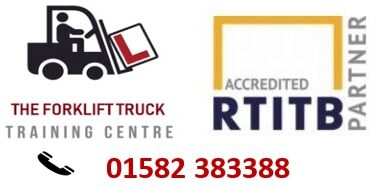
Forklifts are unlikely to ever cause human beings a War of the Worlds-style crisis. Yet, the way some business owners talk about their preference, you’d think they have a personal vendetta against certain types of forklift.
There are 3 different ways of powering a forklift – gas, electric, and diesel. Each of which brings a range of pros and cons to both the operator and the business owner. So, when you’re deciding to invest in a forklift or two, you’re going to want to know these pros and cons, right?
There is no go-to forklift that business owners should be using. Because, as this list highlights, there are positives and negatives to each type. So, there are a few things you should consider before deciding which forklift to purchase:
- Your budget.
- Your carbon footprint.
- The size of your workspace.
- The location/covering of your workspace.
- Your primary need for a forklift.
Once you’ve considered these 5 points, you’re ready to choose your type of forklift.
Luckily for you, we here at Flexistaff Solutions know a whole heap about forklifts. And we’ve decided to compile a list of the good, the bad, and the ugly parts of gas, electric, and diesel-powered forklifts. Isn’t that nice of us?
So, sit back, relax, and enjoy.
Gas-Powered Forklifts.
Powered by either liquified petroleum gas or compressed neutral gas, this style of forklift is often considered the most popular available. However, this doesn’t mean they’re faultless, as they come with their own set of pros and cons.
Pros:
- Lowest initial cost, perfect for smaller businesses to start off with.
- Quieter than diesel, so less noise pollution for those working around it.
- High travel speeds allow for more efficiency when transporting goods.
- Widely available, meaning that purchasing both the units and the parts is easy.
Cons:
- Fuel costs can rack up and become expensive, offsetting the positive of a low initial cost.
- Up to 90% less power than diesel or electric-powered forklifts, bad for businesses looking to move large loads at a time.
- Produces harmful fumes. These fumes are not as harmful as diesel, which is a positive of sorts. However, for the most part, this is still a negative.
Electric-Powered Forklifts.
Often called battery-powered, these forklifts are favoured in enclosed or indoor areas. But do the pros of a battery-powered forklift outweigh the cons?
Pros:
- No Harmful emissions, a huge plus for businesses looking to lower their carbon footprint.
- Quieter than most forklifts, a positive for workers using and around the forklift.
- Recharging can be cheaper than fuel, a plus side for business owners looking to save money.
- Accelerate and brake pedals only. No clutch or gears make it perfect for newly qualified operators.
Cons:
- Higher initial cost, bad for smaller businesses looking to purchase a forklift.
- Areas needed for recharging, a negative for businesses with limited space or resources at their disposal.
- Not recommended for outdoor use, due to the large electrical components. Bad for businesses looking for equipment for outdoor use.
Diesel-Powered Forklifts.
If these forklifts were animals, they would be oxen. Hard-working, reliable, and powerful. These are the heavy-duty forklifts that mean business. But, as you can imagine, they come with a unique list of positives and negatives.
Pros:
- Made for outside work and are durable in most weather conditions, perfect for businesses with outdoor and exposed work yards.
- Lower service and fuel cost than a gas-powered forklift, making diesel-powered forklifts easy to maintain.
- Simpler design in terms of engine and mechanics, making diesel-powered forklifts easier to maintain and repair.
- Fuel gauges easily show when power is running low. When this occurs, the diesel is topped up, and the forklift can continue.
Cons:
- Can be extremely noisy when operated, which isn’t ideal in a busy workplace such as a work yard.
- A high number of harmful fumes are produced when in use, making diesel forklifts unsuitable for inside areas. This excludes many businesses from being able to use them. Bad for businesses looking to lower their carbon footprint.
- Generally larger than electric or gas-powered forklifts, meaning they need a large area to operate. Which is, of course, bad for businesses that have anything other than a large operating area.
Conclusion.
This guide should help you to decide which style of forklift is best for your business. However, if you’re still unsure or you have any questions, get in contact. We’re more than happy to help!
Or, if you’re looking for forklift training & refresher courses, we provide those too! Click here for more info
Thanks for reading, and we’ll see you next time
